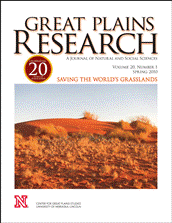Great Plains Studies, Center for

Great Plains Research: A Journal of Natural and Social Sciences (through 2013)
Date of this Version
October 1996
Document Type
Article
Abstract
The issue of free trade has fueled political debate in North America for the past decade. The authors, members of the Canadian free trade negotiating team, provide an inside view and defense of the Canada-US. Free Trade Agreement (FTA). Their three-part story begins with ail outline of the economic theory and macroeconomic reality that prompted Canada and the United States to consider free trade. It also reveals the political skirmishes in Canada and the US. that set the stage for FTA negotiations. Section two delineates the actual free trade negotiations, key negotiators, and issues. The authors describe how philosophical differences over the implications of free trade nearly derailed the FTA. While Canadians viewed it as the most important trade agreement in the twentieth century, Americans considered the FTA as a mere opportunity to resolve existing trade irritants and a step towards renewed multilateral trade relations. The final section describes how this impasse was surmounted by dogged determination and last-minute compromise (hence the title, Decision at Midnight).
While the book presents a Canadian perspective, there is much to interest American readers. The authors deftly summarize the history of US. Canada trade relations and the personalities involved. They also explain why agriculture was such a controversial issue during the trade talks: Canada insisting on retaining its agricultural marketing boards and supply management programs; the United States staunchly defending its farm subsidies and import quotas. As a result, agriculture was largely exempted from the FTA due to non-tariff issues.


Comments
Published in Great Plains Research 6:2 (Fall 1996). Copyright © 1996 The Center for Great Plains Studies, University of Nebraska–Lincoln. Used by permission. http://www.unl.edu/plains/publications/GPR/gpr.shtml